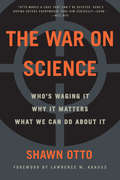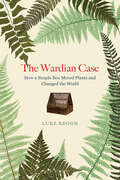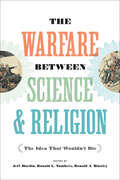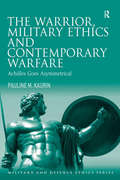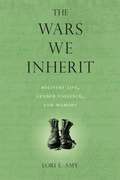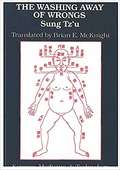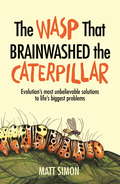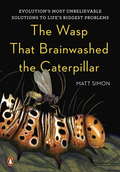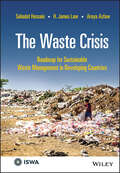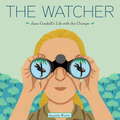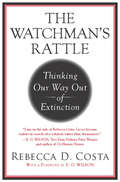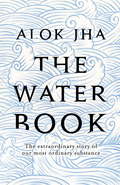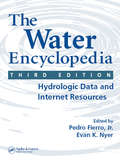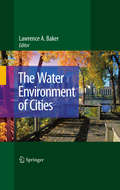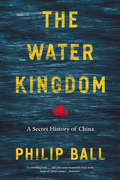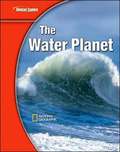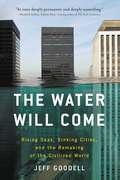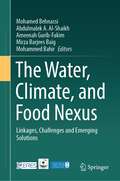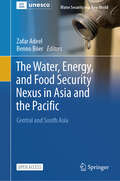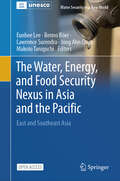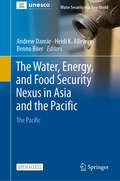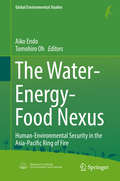- Table View
- List View
The War on Science: Who's Waging It, Why It Matters, What We Can Do About It
by Shawn Lawrence Otto"Wherever the people are well informed," Thomas Jefferson wrote, "they can be trusted with their own government." But what happens when they are not? In every issue of modern society--from climate change to vaccinations, transportation to technology, health care to defense--we are in the midst of an unprecedented expansion of scientific progress and a simultaneous expansion of danger. At the very time we need them most, scientists and the idea of objective knowledge are being bombarded by a vast, well-funded, three-part war on science: the identity politics war on science, the ideological war on science, and the industrial war on science. The result is an unprecedented erosion of thought in Western democracies as voters, policymakers, and justices actively ignore the evidence from science, leaving major policy decisions to be based more on the demands of the most strident voices.Shawn Otto's compelling new book investigates the historical, social, philosophical, political, and emotional reasons why evidence-based politics are in decline and authoritarian politics are once again on the rise on both left and right, and provides some compelling solutions to bring us to our collective senses, before it's too late.
The War on Terrorism: A Collision of Values, Strategies, and Societies
by Thomas A. JohnsonIn order to eradicate terrorism, our nation must go beyond merely shoring up military strength. It must also effectively confront the fundamentalist ideology that fuels and supports the terrorists. The War on Terrorism: A Collision of Values, Strategies, and Societies operates on the premise that the violent rejection of globalization at the root o
The Wardian Case: How a Simple Box Moved Plants and Changed the World
by Luke KeoghRoses, jasmine, fuchsia, chrysanthemums, and rhododendrons bloom in gardens across the world, and yet many of the most common varieties have roots in Asia. How is this global flowering possible? In 1829, surgeon and amateur naturalist Nathaniel Bagshaw Ward placed soil, dried leaves, and the pupa of a sphinx moth into a sealed glass bottle, intending to observe the moth hatch. But when a fern and meadow grass sprouted from the soil, he accidentally discovered that plants enclosed in glass containers could survive for long periods without watering. After four years of experimentation in his London home, Ward created traveling glazed cases that would be able to transport plants around the world. Following a test run from London to Sydney, Ward was proven correct: the Wardian case was born, and the botanical makeup of the world’s flora was forever changed. In our technologically advanced and globalized contemporary world, it is easy to forget that not long ago it was extremely difficult to transfer plants from place to place, as they often died from mishandling, cold weather, and ocean salt spray. In this first book on the Wardian case, Luke Keogh leads us across centuries and seas to show that Ward’s invention spurred a revolution in the movement of plants—and that many of the repercussions of that revolution are still with us, from new industries to invasive plant species. From the early days of rubber, banana, tea, and cinchona cultivation—the last used in the production of the malaria drug quinine—to the collecting of beautiful and exotic flora like orchids in the first great greenhouses of the United States Botanic Garden in Washington, DC, and England’s Royal Botanic Gardens, Kew, the Wardian case transformed the world’s plant communities, fueled the commercial nursery trade and late nineteenth-century imperialism, and forever altered the global environment.
The Warfare between Science & Religion: The Idea That Wouldn't Die
by Edited by Jeff Hardin, Ronald L. Numbers, and Ronald A. BinzleyA “very welcome volume” of essays questioning the presumption of irreconcilable conflict between science and religion (British Journal for the History of Science).The “conflict thesis”—the idea that an inevitable, irreconcilable conflict exists between science and religion—has long been part of the popular imagination. The Warfare between Science and Religion assembles a group of distinguished historians who explore the origin of the thesis, its reception, the responses it drew from various faith traditions, and its continued prominence in public discourse.Several essays examine the personal circumstances and theological idiosyncrasies of important intellectuals, including John William Draper and Andrew Dickson White, who through their polemical writings championed the conflict thesis relentlessly. Others consider what the thesis meant to different religious communities, including evangelicals, liberal Protestants, Roman Catholics, Eastern Orthodox Christians, Jews, and Muslims. Finally, essays both historical and sociological explore the place of the conflict thesis in popular culture and intellectual discourse today.Based on original research and written in an accessible style, the essays in The Warfare between Science and Religion take an interdisciplinary approach to question the historical relationship between science and religion, and bring much-needed perspective to an often-bitter controversy.Contributors include: Thomas H. Aechtner, Ronald A. Binzley, John Hedley Brooke, Elaine Howard Ecklund, Noah Efron, John H. Evans, Maurice A. Finocchiaro, Frederick Gregory, Bradley J. Gundlach, Monte Harrell Hampton, Jeff Hardin, Peter Harrison, Bernard Lightman, David N. Livingstone, David Mislin, Efthymios Nicolaidis, Mark A. Noll, Ronald L. Numbers, Lawrence M. Principe, Jon H. Roberts, Christopher P. Scheitle, M. Alper Yalçinkaya
The Warfare between Science and Religion: The Idea That Wouldn't Die
by Edited by Jeff Hardin, Ronald L. Numbers, and Ronald A. BinzleyWhy is the idea of conflict between science and religion so popular in the public imagination?The "conflict thesis"—the idea that an inevitable and irreconcilable conflict exists between science and religion—has long been part of the popular imagination. In The Warfare between Science and Religion, Jeff Hardin, Ronald L. Numbers, and Ronald A. Binzley have assembled a group of distinguished historians who explore the origin of the thesis, its reception, the responses it drew from various faith traditions, and its continued prominence in public discourse. Several essays in the book examine the personal circumstances and theological idiosyncrasies of important intellectuals, including John William Draper and Andrew Dickson White, who through their polemical writings championed the conflict thesis relentlessly. Other essays consider what the thesis meant to different religious communities, including evangelicals, liberal Protestants, Roman Catholics, Eastern Orthodox Christians, Jews, and Muslims. Finally, essays both historical and sociological explore the place of the conflict thesis in popular culture and intellectual discourse today. Based on original research and written in an accessible style, the essays in The Warfare between Science and Religion take an interdisciplinary approach to question the historical relationship between science and religion. This volume, which brings much-needed perspective to an often bitter controversy, will appeal to scholars and students of the histories of science and religion, sociology, and philosophy.Contributors: Thomas H. Aechtner, Ronald A. Binzley, John Hedley Brooke, Elaine Howard Ecklund, Noah Efron, John H. Evans, Maurice A. Finocchiaro, Frederick Gregory, Bradley J. Gundlach, Monte Harrell Hampton, Jeff Hardin, Peter Harrison, Bernard Lightman, David N. Livingstone, David Mislin, Efthymios Nicolaidis, Mark A. Noll, Ronald L. Numbers, Lawrence M. Principe, Jon H. Roberts, Christopher P. Scheitle, M. Alper Yalçinkaya
The Warrior, Military Ethics and Contemporary Warfare: Achilles Goes Asymmetrical (Military and Defence Ethics)
by Pauline M. KaurinWhen it comes to thinking about war and warriors, first there was Achilles, and then the rest followed. The choice of the term warrior is an important one for this discussion. While there has been extensive discussion on what counts as military professionalism, that is what makes a soldier, sailor or other military personnel a professional, the warrior archetype (varied for the various roles and service branches) still holds sway in the military self-conception, rooted as it is in the more existential notions of war, honor and meaning. In this volume, Kaurin uses Achilles as a touch stone for discussing the warrior, military ethics and the aspects of contemporary warfare that go by the name of 'asymmetrical war.' The title of the book cuts two ways-Achilles as a warrior archetype to help us think through the moral implications and challenges posed by asymmetrical warfare, but also as an archetype of our adversaries to help us think about asymmetric opponents.
The Wars We Inherit: Military Life, Gender Violence, and Memory
by Lori E. AmyBy combining personal memoir and critical analysis, Lori Amy links the violence we live in our homes to the violence that structures our larger culture. The Wars We Inherit brings insights from memory and trauma studies to the story of violence in the author's own family. In this brave, fascinating and compelling book, Amy concerns herself with the violence associated with the military, and how this institution of public, cultural violence, with its hypermasculinity, pervades society with physical, verbal, emotional and sexual aggression. She uses her war-veteran father to represent the chaotic and dehumanizing impact of war to show how violence is experienced and remembered. Amy provides examples that support the relationship between military structures and domestic violence, or how the sexual violence that permeates her family prompts debates about the nature of trauma and memory. In addition, Amy employs feminist psychoanalytic theory, cultural and trauma studies, and narrative theory, to explain how torture in Abu Ghraib is on a direct continuum with the ordinary violence inherent in our current systems of gender and nation. Placing individual experience in cultural context, Amy argues that "if we can begin, in our own lives, to transform the destructive ways that we have been shaped by violence, then we might begin to transform the cultural conditions that breed violence. "
The Washing Away of Wrongs: Forensic Medicine in Thirteenth-Century China (Science, Medicine, and Technology in East Asia #1)
by Sung Tz'U Brian E. McKnightT'zu's The Washing Away of Wrongs (Hsi yüan chi lu), printed in 1247, is the oldest extant book on forensic medicine in the world. Written as a guide for magistrates in conducting inquests, the book is a major source on early Chinese knowledge of pathology and morbid anatomy. Includes a lengthy introductory essay by the translator.
The Wasp That Brainwashed the Caterpillar
by Matt SimonFor fans of WHAT IF? and NEW SCIENTIST comes this brilliantly funny and informative look at the stranger side of evolution.Featuring:The Zombie ants mind-controlled by a fungusBeautiful salamanders that can regenerate any part of their bodies, including their brainsThe mantis shrimp, which fires its club-like appendage so fast that the surrounding water becomes as hot as the surface of the sunThe Antechinus, whose runaway testosterone levels cause them to have so much sex during their three-week mating season that they bleed internally, go blind, and drop dead...Featuring quirky illustrations and the signature blend of science smarts and humour that make Matt Simon's Wired column so entertaining, this is an ideal stocking-filler for every popular science aficionado...
The Wasp That Brainwashed the Caterpillar: Evolution's Most Unbelievable Solutions to Life's Biggest Problems
by Matt Simon"A bizarre collection of evolution tales . . . the weirder, the better." --Entertainment Weekly. A fascinating exploration of the awe-inspiring, unsettling ingenuity of evolution. On a barren seafloor, the pearlfish swims into the safety of a sea cucumber's anus. To find a meal, the female bolas spider releases pheromones that mimic a female moth, luring male moths into her sticky lasso web. The Glyptapanteles wasp injects a caterpillar with her young, which feed on the victim, erupt out of it, then mind-control the poor (and somehow still living) schmuck into protecting them from predators.These are among the curious critters of The Wasp That Brainwashed the Caterpillar, a jaunt through evolution's most unbelievable, most ingenious solutions to the problems of everyday life, from trying to get laid to finding food. Join Wired science writer Matt Simon as he introduces you to the creatures that have it figured out, the ones that joust with their mustaches or choke sharks to death with snot, all in a wild struggle to survive and, of course, find true love. <br> <b>Winner of the 2017 Alex Award (10 best adult books that appeal to teen audiences)</b>
The Waste Crisis: Roadmap for Sustainable Waste Management in Developing Countries (International Solid Waste Association)
by Sahadat Hossain H. James Law Araya AsfawThe Waste Crisis Explore modern solutions to the most critical issues in waste management policy and design In The Waste Crisis: Roadmap for Sustainable Waste Management in Developing Countries, an accomplished team of sustainability researchers deliver a concise insight of modern waste management practices that acts as a handbook for waste management professionals. Along with flow charts and example problems, the authors offer readers the information necessary to support decision making based on country, city size, population, waste generation volume, type, geographical location, and more. The book begins with an overview of current waste management practices, including waste generation, collection, processing, composting, recycling, and disposal. It moves on to a series of case studies from over ten countries and presentations of sustainable waste management strategies. The Waste Crisis: Roadmap for Sustainable Waste Management in Developing Countries concludes with a series of practical and effective final recommendations for future best practices. It also includes: Practical discussions of material flow, cost-effective material recovery, anaerobic digestion, composting, recycling, disposal, training, and human capacity building Comprehensive explorations of unique and robust decision-making strategies for designers, policy makers, and regulators In-depth treatments of ready-to-implement waste management systems perfect for systems designers The Waste Crisis: Roadmap for Sustainable Waste Management in Developing Countries is an indispensable resource for waste, recycling, and resource management professionals. It???s also perfect for waste management system designers and decision makers seeking a one-stop guide to issues of sustainability in the developing world.
The Watcher: Jane Goodall's Life with the Chimps
by Jeanette WinterAcclaimed picture book biographer Jeanette Winter has found her perfect subject: Jane Goodall, the great observer of chimpanzees. Follow Jane from her childhood in London watching a robin on her windowsill, to her years in the African forests of Gombe, Tanzania, invited by brilliant scientist Louis Leakey to observe chimps, to her worldwide crusade to save these primates who are now in danger of extinction, and their habitat. Young animal lovers and Winter's many fans will welcome this fascinating and moving portrait of an extraordinary person and the animals to whom she has dedicated her life.From the Hardcover edition.
The Watchman's Rattle
by Rebecca CostaWhy does it feel as if our most challenging problems today- the worldwide recession, global warming, fast-spreading viruses, terrorism and poverty- aren't getting solved? What if our brain has limits that prevent it from solving such complex problems? If ancient civilisations collapsed because they, too, hit a cognitive limitation, are we headed for a similar collapse, and if so, can it be prevented? Using historical and modern-day examples, The Watchman's Rattle describes the cognitive gridlock that sets in when complexity races ahead of the brain's ability to manage it. Beginning with the Mayans, Khmer and Roman Empires, Costa shows how the tendency to find a quick fix to problems by focusing on symptoms instead of searching for permanent solutions, leads to frightening long-term consequences: Society's ability to solve its most challenging, intractable problems becomes gridlocked, progress slows and collapse ensues. But, as Costa reveals, there is a growing body of scientific evidence that the human brain can be retrained to comprehend, analyse and resolve massively complex problems. A process of intuitive thinking, which Neuroscientists refer to as 'insight'. Part history, part social science, part biology, The Watchman's Rattle is sure to provoke, engage and incite change.
The Watchman's Rattle
by Rebecca CostaWhy can't we solve our problems anymore? Why do threats such as the Gulf oil spill, worldwide recession, terrorism, and global warming suddenly seem unstoppable? Are there limits to the kinds of problems humans can solve? Rebecca Costa confronts- and offers a solution to-these questions in her highly anticipated and game-changing book, The Watchman's Rattle. Costa pulls headline for today's news to demonstrate how accelerating complexity quickly outpaces that rate at which the human brain can develop new capabilities. With compelling evidenced based on research in the rise and fall of Mayan, Khmer, and Roman empires, Costa shows how t ht tendency to find a quick solutions- leads to frightening long term consequence: Society's ability to solve its most challenging, intractable problems becomes gridlocked, progress slows, and collapse ensues. A provocative new voice in the tradition of thought leaders Thomas Friedman, Jared Diamond and Malcolm Gladwell, Costa reveals how we can reverse the downward spiral. Part history, part social science, part biology, The Watchman's Rattle is sure to provoke, engage and incite change.
The Water Book
by Alok JhaWater is the most every day of substances. It pours from our taps and falls from the sky. We drink it, wash with it, and couldn't live without it. Yet, on closer examination it is also a very strange substance (it is one of only a very small number of molecules which expand when cooled). Look closer again and water reveals itself as a key to a scientific story on the biggest of canvases.Water is crucial to our survival - life depends on it - but it was also fundamental in the origins of life on Earth. The millions of gallons of water which make up our rivers, lakes and oceans, originated in outer space. How it arrived here and how those molecules of water were formed, is a story which takes us back to the beginning of the universe. Indeed, we know more about the depths of space than we do about the furthest reaches of the oceans.Water has also shaped the world we live in. Whether it is by gently carving the Grand Canyon over millennia, or in shaping how civilisations were built; we have settled our cities along rivers and coasts. Scientific studies show how we feel calmer and more relaxed when next to water. We holiday by the seas and lakes. Yet one day soon wars may be fought over access to water.The Water Book will change the way you look at water. After reading it you will be able to hold a glass of water up to the light and see within it a strange molecule that connects you to the origins of life, the birth (and death) of the universe, and to everyone who ever lived.
The Water Encyclopedia: Hydrologic Data and Internet Resources
by Pedro Fierro Jr. Evan K. Nyer�Just do an Internet search.� �It's on the Internet� These phrases have quickly become a part of the vernacular. The quintessential book of data relating to water, The Water Encyclopedia: Hydrologic Data and Internet Resources, Third Edition arose from the premise that most of the information provided within this publication could be easily
The Water Environment of Cities
by Lawrence A. BakerUrbanization of the Earth's population will have increased the Earth's urban population from less than one billion in 1950 to five billion by 2030. Managing water for this burgeoning urban population is one of the critical needs for humanity. This book uses a holistic, interdisciplinary approach to examine the urban water environment. Water has multiple roles: municipal water supply, aquatic habitat, landscape aesthetics and recreation. Increasingly, urban water is reused, serving multiple purposes. Humans alter the urban hydrologic cycle and the chemical and physical integrity of urban water systems and resources. Some of those changes are beneficial, and others harmful. Understanding those changes and impacts requires expertise and perspective from a wide range of disciplines. Chapter authors represent this diversity of expertise, with expertise in surface and groundwater hydrology, civil and environmental engineering, environmental policy, urban planning, law, geomorphology, and recreation management.
The Water Kingdom: A Secret History of China
by Philip Ball&“A rewarding read&” this political, social and cultural history of water management in China &“puts water beautifully back at the heart of China&’s story&” (Economist). From the Yangtze to the Yellow River, China is traversed by great waterways, which have defined its politics and ways of life for centuries. In The Water Kingdom, renowned writer Philip Ball opens that window to offer an epic and powerful new way of thinking about Chinese civilization. Water, Ball shows, is a key that unlocks much of Chinese culture. In The Water Kingdom, he takes us on a grand journey through China&’s past and present, showing how the complexity and energy of the country and its history repeatedly come back to the challenges, opportunities, and inspiration provided by the waterways. Drawing on stories from travelers and explorers, poets and painters, bureaucrats and activists, Ball explores how the ubiquitous relationship of the Chinese people to water has made it an enduring metaphor for philosophical thought and artistic expression. From the Han emperors to Mao, the ability to manage the waters--to provide irrigation and defend against floods--was a barometer of political legitimacy, often resulting in engineering works on a gigantic scale. It is a struggle that continues today, as the strain of economic growth on water resources may be the greatest threat to China&’s future.The Water Kingdom offers an unusual and fascinating history, uncovering just how much of China&’s art, politics, and outlook have been defined by the links between humanity and nature. &“Ball argues that China&’s future, like the past, can be read in the fate of its water.&” --Guardian
The Water Planet
by Glencoe Mcgraw-HillDiscover the Flexibility to Teach Science Your Way!. "Glencoe Science: The Water Planet," a module in the Glencoe Science 15 book series, provides students with accurate and comprehensive coverage of middle school National Science Education Standards. Concepts are explained in a clear, concise manner, and are integrated with a wide range of hands-on experiences, critical thinking opportunities, real-world applications, and connections to other sciences and to non-science areas of the curriculum. Co-authored by National Geographic, unparalleled graphics reinforce key concepts. A broad array of print and technology resources help differentiate and accommodate all learners. The modular approach allows you to mix and match books to meet your specific curriculum needs.
The Water Will Come: Rising Seas, Sinking Cities, And The Remaking Of The Civilized World
by Jeff GoodellAn eye-opening and essential tour of the vanishing world What if Atlantis wasn't a myth, but an early precursor to a new age of great flooding? <P><P>Across the globe, scientists and civilians alike are noticing rapidly rising sea levels, and higher and higher tides pushing more water directly into the places we live, from our most vibrant, historic cities to our last remaining traditional coastal villages. With each crack in the great ice sheets of the Arctic and Antarctica, and each tick upwards of Earth's thermometer, we are moving closer to the brink of broad disaster. <P><P>By century's end, hundreds of millions of people will be retreating from the world's shores as our coasts become inundated and our landscapes transformed. From island nations to the world's major cities, coastal regions will disappear. Engineering projects to hold back the water are bold and may buy some time. <P><P>Yet despite international efforts and tireless research, there is no permanent solution-no barriers to erect or walls to build-that will protect us in the end from the drowning of the world as we know it. <P><P>The Water Will Come is the definitive account of the coming water, why and how this will happen, and what it will all mean. As he travels across twelve countries and reports from the front lines, acclaimed journalist Jeff Goodell employs fact, science, and first-person, on-the-ground journalism to show vivid scenes from what already is becoming a water world.
The Water, Climate, and Food Nexus: Linkages, Challenges and Emerging Solutions
by Ameenah Gurib-Fakim Mohamed Behnassi Mirza Barjees Baig Abdulmalek A. Al-Shaikh Mohammed BahirThis contributed book, as a part of a series of CERES publications, provides a multi-regional and cross-sectoral analysis of the interlinkages, challenges, and emerging responses in the areas of water security, climate change, and food systems, especially in a context marked by severe implications of the COVID-19 pandemic, increased climate vulnerability of many regions already water stressed, and an ambitious global action aiming at curbing climate change and restoring ecosystem. In the first set of chapters, the water, food, and environmental/climate security nexus is explored theoretically and by reference to empirical research covering many regions and sectors. In another set of chapters, the impacts of climate change on water resources and water-stressed regions are identified along with their implications for food systems and security. Other chapters of the volume identify the emerging solutions to the nexus challenges, mainly adaptation and mitigation options, governance and management approaches, technological and economic solutions, innovative farming and water management practices, etc. Most chapters scheduled for publication address timely and future-oriented topics, are based on empirical research particularly done in water-constrained and climate vulnerable countries from Asia, Africa, and the MENA region, and provide policy-oriented inputs and recommendations to guide change processes at multiple scales.
The Water, Energy, and Food Security Nexus in Asia and the Pacific: Central and South Asia (Water Security in a New World)
by Benno Böer Zafar AdeelThis open access book considers that the Central and South Asian region sits at the middle of geographical, geopolitical, economic and historical cross-roads. Since the independence of the Central Asian states in the 1990s, following the demise of the Soviet Union, and emergence of regional trade and political ties means that the region’s evolution has also been subject to common drivers – external and internal, opening up some new opportunities. The long-term social and economic success of the region depends on how water, energy, and food security is achieved at a regional scale that combines Central Asia and South Asia, which are typically treated separately in policy and scholarly works. This book considers how securing the “Nexus” of water, energy, and food resources serves as a starting point for utilizing emerging region-wide opportunities. It does so by identifying the present state of play, deeply analyzing cross-cutting drivers (e.g., climate change, poverty, environmentalcrises and urbanization) and offering insights into possible solutions.The book offers an in-depth rationale for why dealing with this region as a whole makes sense; it is then divided into four sections: The first section, entitled “A Regional Overview,” establishes the basic facts around the state of water, energy, and food resources; this section is meant to serve as the foundation upon which further exploration and analysis is built. The second section turns its attention to “Regional Issues” and unpacks the Nexus into water–energy and water–food relationships. It also investigates how regional trade and coping mechanisms for environmental crises might inform the policies on the Nexus. The section includes a sampling of success and failure stories around implementation of the Nexus policies and strategies in the Central and South Asian region. The third section undertakes an analysis of the “Cross-Cutting Themes for Nexus Security” by investigating all the major drivers of policy and development strategies in the region: climate change, urbanization, poverty, sharing of resources across borders, and gender-based disparities. The fourth and final section uses the discussion throughout the book to formulate “An Integrated Narrative” around the Nexus. It explores how the new global development framework in the form of Sustainable Development Goals might offer a new perspective for achieving the Nexus security in the region. There is an argument that the Nexus security ties in with achievement of long-term peace and security. A final wrap-up chapter gazes into the crystal ball to test out some future scenarios – both positive and negative.
The Water, Energy, and Food Security Nexus in Asia and the Pacific: East and Southeast Asia (Water Security in a New World)
by Makoto Taniguchi Benno Böer Eunhee Lee Lawrence Surendra Jong Ahn ChunThis Open Access book undertakes a comprehensive analysis of the water, energy, and food (WEF) security nexus with a regional focus on East and Southeast Asia. Individual chapters of this book provide interesting nexus dimensions of the region and explore socioeconomic implications of the nexus approach with a special focus on the cross-cutting issues, including climate change, gender, and trans-boundary cooperation. It also discusses innovative approaches, advanced nexus solutions, and various future scenarios. Finally, it suggests that an improved nexus understanding based on scientific evidence is a key element to achieve the Sustainable Development Goals (SDGs). With explosive population growth and economic development, countries in East and Southeast Asia are witnessing competitive consumption of WEF resources across various sectors and across borders. The diverse range of geographical, political, and economic conditions combined with climatechange and urbanization is posing a new set of challenges in the region. The long-term security of WEF, therefore, would need an integrated nexus approach through an enhanced understanding how the interactions between WEF resources are shaped by environmental, economic, social, and political changes in the region. This book is a highly recommended source of information and inspiration for policy makers, research communities and practitioners dealing with any aspect of water, energy, and food security in East and Southeast Asia.
The Water, Energy, and Food Security Nexus in Asia and the Pacific: The Pacific (Water Security in a New World)
by Benno Böer Andrew Dansie Heidi K. AllewayThis open access book considers the water, energy, food (WEF) nexus in the Pacific region. The region comprises seventeen sovereign countries and seven territories spread across the Pacific Ocean, a blue expanse that covers a fifth of the world’s surface area but contains only 0.5% of the population—or 44.5 million people. The uniqueness of the Pacific and the need for a Pasifika-led approach to sustainability across environmental, societal and economical spheres requires this blue continent to be considered in a separate volume under the ‘Water Security in a New World’ series.This Pacific volume is focussed on water, energy and food security in Pacific Island Countries and Territories (PICTs) and the challenges produced by the impacts of anthropogenic climate change and human population pressures. The diversity of culture, traditional knowledge and ways of life across the Pacific are united by similar geographies and opportunities to apply a ‘Pacific specific’ WEF nexus approach; a coordinated approach to manage water, energy and food that is centred on active decision making across the three sectors to increase the security of each. Importantly, a WEF nexus approach builds on national and international efforts to date in the Pacific which include Integrated Water Resource Management, Ridge to Reef, Source to Sea, UNESCO Biosphere Reserves, Integrated Coastal Zone Management and other similar approaches.In this book, contributions by authors from governments, regional bodies, multilateral agencies, and academia describe water security and its intersectionality with both the energy and food sectors, highlighting the significance of both land and marine food systems and connectivity between water and energy in a Pacific-focussed context. It is demonstrated that these systems cannot be separated from the challenges associated with healthy environments and functioning ecological services, transport, and waste that are unique to this vast archipelagic region. To achieve meaningful change, it is essential that solutions are cognizant of the world’s colonial past and the global inequalities that persist today. The path forward for water and food systems is one that is Pasifika-led and builds on traditional knowledge and local capacity. National energy demands must consider the future with solutions comprising both WEF-integrated approaches and new energy technologies to hasten the transition away from fossil fuels. Globally, major greenhouse gas emitters both past and present need to step up for the environmental and economic benefit of all by rapidly reducing greenhouse gas emissions and supporting Pasifika leadership on highly ambitious net zero goals.This book is a highly recommended source of information and inspiration for policy makers, decision makers, research communities and practitioners dealing with any aspect of water, energy, or food security in the Pacific.
The Water-Energy-Food Nexus: Human-environmental Security In The Asia-pacific Ring Of Fire (Global Environmental Studies)
by Aiko Endo Tomohiro OhThis book highlights the water-energy-food nexus as one of the most important and fundamental global environmental issues facing the world. Climate and social changes are putting increased pressure on water, energy and food resources. As water is the central aspect within this cluster, the book focuses on the inherent tradeoffs in water resources between producing/consuming energy and food. In addition, it discusses an inter- and trans-disciplinary approach to understanding the complexity of the water-energy-food nexus system, and creating policy options to reduce the tradeoffs among resources. The content integrates a variety of academic disciplines, including not only the natural sciences (e.g. hydrology, coastal oceanography, costal aquatic bioscience, fisheries, environmental earth science etc.) but also the humanities and social sciences (e.g. marine policy, environmental energy policy, resource governance, policy process theory etc.). The book can be used as a textbook for undergraduate and graduate-level sustainability science courses. Further, its practical content and trans-disciplinary approach to addressing nexus issues with stakeholders offers vital information for practitioners and administrators alike.
